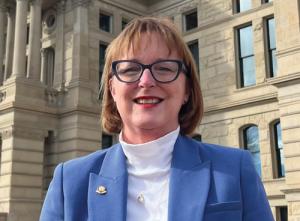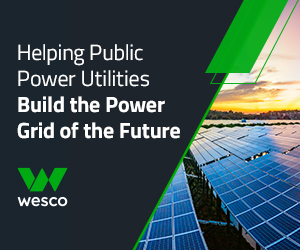State Commissioners
Mary Throne chairs the Wyoming Public Service Commission and NARUC’s the Subcommittee on Clean Coal and Carbon Management. Paul Kjellander is PUF Senior Advisor and former Idaho PUC Chair.
Ten Commissioners discuss their concerns about electric power infrastructure.

PUF's Paul Kjellander: What are the most important needs for electric power infrastructure?
Chair Mary Throne: The greatest challenge is that we have to find some way to ensure that we right-size everything, that we don't build too little and that we don't build too much, and that we build the right mix, so we have resiliency, reliability, and adequate resources. I continue not to feel confident that we've put it all together yet.
PUF: What are the greatest concerns about infrastructure needs?
Chair Mary Throne: Looking at the western region, with which I'm more familiar, we have growing disruptive or extreme weather events. I almost don't like to call them extreme anymore because they're somewhat recurring. Those put strains on the system.
In addition, it seems that everybody is facing increased demand with a lot of potential data centers. Ordinarily that would be a good thing and is a good thing for most economies.
Our communities certainly want those but getting everything built and then on top of that, you have the overlay of some states' and businesses' clean energy goals, and it's just a difficult situation.
PUF: How should utility regulation adjust to needs and concerns for infrastructure development?
Chair Mary Throne: The right tools need to be in place for the current circumstances and that's true whatever you're regulating. Relying exclusively on the models we've used in the past, when you built one massive coal-fired power plant, then built the transmission to the load, is not the answer anymore. Having the right tools to assess all these different pieces is important.
PUF: How different might the electric power infrastructure look in 2040?
Chair Mary Throne: It's already starting to change. I wish I had a better idea of what it needs to look like in 2040 to meet all these competing demands, but I think it's going to be a more substantial percentage of renewables and distributed resources.
The need for flexible, dispatchable baseload, however you want to title it, could be met by a mixture of sources. We continue to expect in Wyoming to have a decent-sized carbon-capture project, advanced nuclear, and at some point, hydrogen.
Hopefully we've built the right transmission to get the power to where it needs to be. Wyoming, as you know, is an exporting state, and we don't necessarily want all the burdens required to serve others' loads if it means increased utility costs to us that we would not otherwise incur.
PUF: How do infrastructure needs compete with concerns about affordability?
Chair Mary Throne: They have to go hand in hand, don't they? The conversation about how we address decarbonization got off on the wrong foot years ago, and I don't know how we get it back on the right track.
I think decarbonization is a collective goal and it's unrealistic to expect specific ratepayers to shoulder the entire burden. I think it's a societal objective.
Much infrastructure growth and especially research and development, are going to require a lot of continued government intervention, whether in the form of funding for research or loan guarantees. The picture, in my mind, has been getting a little clearer over the last few years since I started this job, but I still don't see a clear path to either 2030 or 2040.
The path may become clearer in the next few years as we hopefully get better information on the commercial viability of advanced nuclear, hydrogen, and carbon capture. The next few years are going to be critical in determining how we achieve that ideal goal by 2040. Because in the utility world, 2030 is almost yesterday and 2040 is tomorrow.
Commission articles at fortnightly.com:



